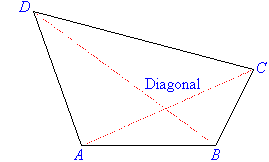(a) Show that $$Φ(x)=x(y^3-7z^3),~~~~~Φ(y)=y(7z^3-x^3),~~~~~Φ(z)=z(x^3-y^3)$$ defines a $ℂ$-algebra homomorphism from $k[V]$ to itself.
(b) Let $φ~:~V→V$ be the morphism corresponding to $Φ$. Observe that $(-2,1,1)∈V$ and compute $φ(-2,1,1)$.
(c) Prove that there are infinitely many points $(a,b,c)∈V$ with $a,b,c∈ℤ$ and the greatest common divisor of $a,b,c$ is $1$.
Proof: (a) It sufficies to show $Φ(x^3+y^3+7z^3)∈(x^3+y^3+7z^3)$, and indeed general polynomial division will reveal $x^3+y^3+7z^3~|~Φ(x^3+y^3+7z^3)$.
(b) We see $φ$ is the morphism defined by $φ(a,b,c)=(a(b^3-7c^3),b(7c^3-a^3),c(a^3-b^3))$, so $φ(-2,1,1)=(12,15,-9)$.
(c) We may assume $a,b,c$ for $(a,b,c)∈V$ are pairwise relatively prime when $a,b,c$ have a trivial greatest common factor; to see this, assume two elements are divisible by a prime $p$. By reducing $x^3+y^3+7z^3=0$ modulo $p^3$, we see that the other element too must be divisible by $p$, impossible if they have trivial greatest common factor.
Let $ψ(a,b,c)=\dfrac{φ(a,b,c)}{d}$ when $d$ is the greatest common factor of the three coordinates of $φ(a,b,c)$. We shall show the first coordinate of $(a,b,c)$ is smaller than or equal in absolute value than that of the first coordinate of $Ψ(a,b,c)$ as well as are the second coordinates when $c≠0$, but that they cannot both be equalities, so $Ψ^i(-2,1,1)≠Ψ^j(-2,1,1)$ for nonnegative $i≠j$.
Assume an arbitrary prime $p~|~d$ when $d$ is the greatest common divisor of the coordinates of $φ(a,b,c)=(a(b^3-7c^3),b(7c^3-a^3),c(a^3-b^3))$ when $(a,b,c)∈V$. We have $p~|~a$ or $p~|~(b^3-7c^3)$; assume the former. Then since $(a,b)=1$ we have $p~|~(7c^3-a^3)$. Reduce modulo $p$ to observe either $p=7$ or $p~|~c$, only the former being possible. But now reduce $a^3+b^3+7c^3=0$ modulo $p=7$ to still get $p~|~b$. Hence $p\not |~a$. Since $p$ was arbitrary this implies $d~|~(b^3-7c^3)$, so $a~|~a'$ when $a'$ is the first coordinate of $Ψ(a,b,c)$. This shows $|a|≤|a'|$, and by very similar reasoning $|b|≤|b'|$.
The only possible case for $|a|=|a'|$ and $|b|=|b'|$ implies $|d|=|b^3-7c^3|=|7c^3-a^3|$. But either $b^3-7c^3=7c^3-a^3$ or $b^3-7c^3=a^3-7c^3$ together with the hypothesis $a^3+b^3+7c^3=0$ implies $c=0$, a contradiction. Therefore the absolute inequality is strict and the proposition is established.$~\square$

